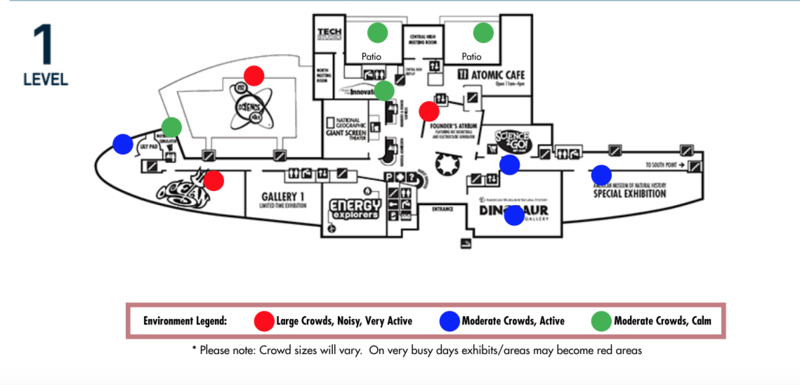Sensory Maps
Sensory Maps
Topic 3: Sensory Maps

Autism Spectrum Disorders intensely affect the senses in many individuals. The effects can include hypersensitivity to sensory input, lack of response to sensory input, or a drive to experience sensation. As stated by Farmer (2014), "These variations in sensory processing...affect emotional functioning, such that people with ASDs can feel overwhelmed or act out." Those who are hypersensitive may also find certain sensory experiences physically painful.
Sensory maps are another support you can provide for people with autism visiting the library to help them avoid over-stimulation of the senses or to help them find areas that would provide additional sensory input that they may be craving, such as an interactive sensory wall, or an area where devices for sensory stimulation (currently referred to as "fidgets") are available. Sensory maps provide information about the layout of a building and the level of sensory stimulation that may be present in each space. Sensory maps commonly point out crowded areas, less crowded areas, noisy areas, quiet areas, areas with bright light, and areas with low light. You can view the Met's sensory map and the sensory map for the Children's Museum of Indianapolis for examples. Notice how the Children's Museum of Indianapolis used simple icons in their legend to denote the various sensory experiences.
Like tour checklists, sensory maps can be adapted for libraries. You can create a sensory map for each level and/or department in your library, clearly marking each area and its level of sensory stimulation. Keep in mind that certain programs also have different sensory elements. Perhaps you would consider adapting sensory mapping to your event calendar or to the program pages on your website.
Check out the Center of Science and Industry's amazing examples of sensory maps and other autism-friendly practices on their webpage. Next, begin to create a sensory map for your library. Start with a floorplan of your library and mark each your library's areas. In each area, note if it is crowded, less crowded, noisy, quiet, and brightly or dimly lit.
References
The Center of Science and Industry (2018). Sensory friendly experiences. Retrieved from https://cosi.org/kids/sensory-friendly-experiences.
The Metropolitan Museum of Art. (2015b). Sensory friendly map of The Metropolitan Museum of Art for visitors on the autism spectrum. Retrieved from http://www.metmuseum.org/-/media/Files/Events/Programs/Progs%20for%20Visitors%20with%20Disabilities/Sensory%20Friendly%20Map.pdf.
